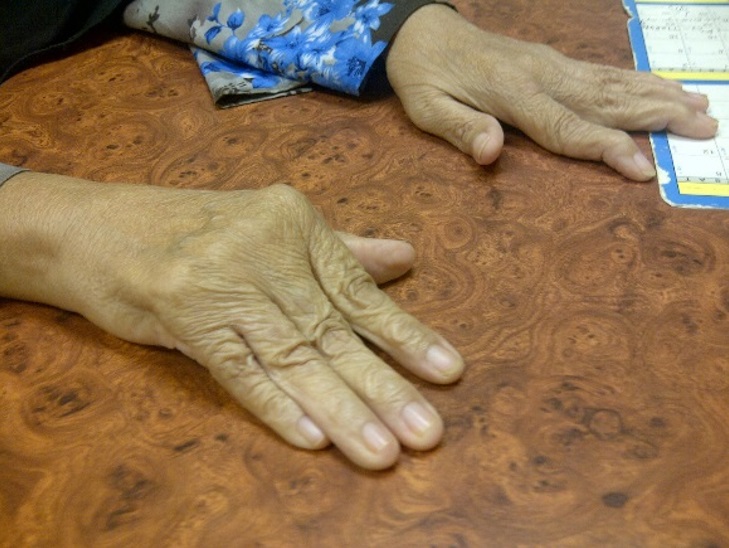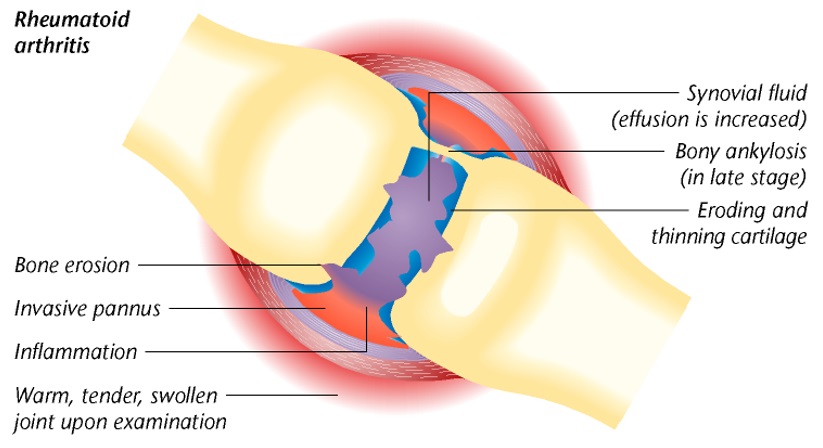Definition
Rheumatoid arthritis is an auto-immune disease which affects the musculoskeletal system causing inflammation of the joints. Patients complain of swelling, pain and stiffness of the joints. If the disease is not controlled, the joints can become deformed which may result in disability.
The disease is not hereditary and commonly affects women in the ratio of 3:1. It can occurs at any age but most commonly between the ages of 35 to 45.
Symptoms
Those affected by the disease develop joint pain, swelling and early morning stiffness. The pain is worse in the morning but eases off as the day progresses. Most commonly affected joints are small joints of the hands and feet. However, the wrists, elbows, shoulders and knees can also be involved.There is early morning stiffness which may cause difficulty in moving and will be relieved with activity.
RA is a long-term disease characterised by periods of joint inactivity and flare-ups.
 |
 |
Complications
- Joint damage
- Disability
- Loss of independency
- Medication side-effects. Hence, it is very important for the patient to adhere to the appointment schedule with the doctor
- Cardiovascular events- patients are at risk if the inflammation is not controlled
Treatment
- Joint protection is very important
- Joint exercise – to help maintain normal joint movements and prevent deformities. You may obtain advice from the physiotherapist
- Splints and assistive devices. Consultation with an occupational therapist is useful to teach you more efficient ways of using your joints and how to cope with rheumatoid arthritis in daily living
- Medications to relieve pain like non-steroidal anti-inflammatory drugs (NSAIDs)
- Medications to modify the disease (DMARD, disease-modifying anti-rheumatic drugs) like sulphasalazine, methotrexate and leflunomide. DMARDs do not act immediately. The latest DMARDS are biologics which are very expensive.
- Steroids – they are used to reduce inflammation and as a bridging therapy while waiting for DMARDs to have an effect. However, they are not used for long-term due to its many side-effects
- Surgery – reserved for people who have more severe conditions (i.e, damaged joints) with deformed joints
Rehabilitation
- Essential to prevent long-term disability
- Input from occupational therapist and physiotherapist is important to educate on optimum joint function and protection
- Patients are advised to be assiduous with rehabilitation and maintain a positive attitude
- Rehabilitation services are available in government hospitals
Although RA cannot be prevented, you can reduce the effects by early diagnosis and treatment. Diagnosis is usually made based on an evaluation of the symptoms, signs on physical examination and supported by investigations.
| Last Reviewed | : | 21 May 2015 |
| Writer | : | Dr. Heselynn bt. Hussein |
| Accreditor | : | Dr. Azmillah bt. Rosman |








